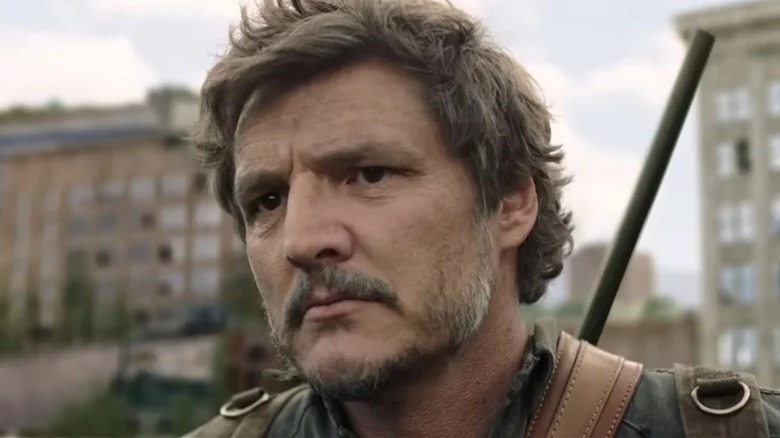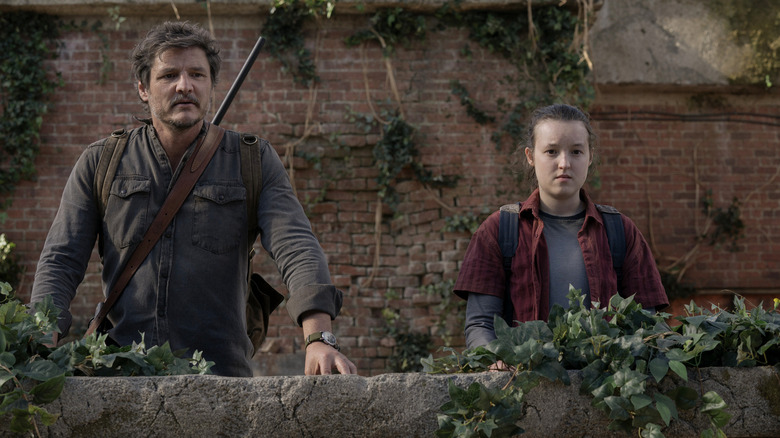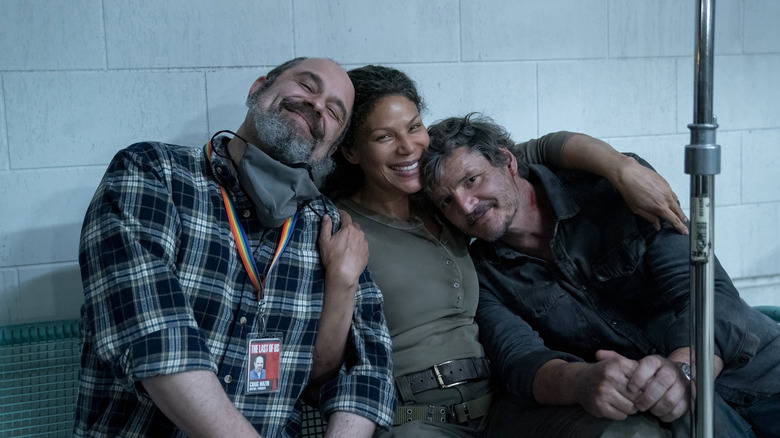The Last Of Us Season Finale Takes Its Cues Straight From The Game (For The Most Part)
"Look for the Light," the ninth and final episode of the first season of HBO's "The Last of Us," is a pretty faithful recreation of the last chunk of the video game. The episode is filled with tender sequences, including the famous scene in which Joel and Ellie experience a moment of peace and feed a giraffe together, as well as a climactic shootout that may hit even harder than it did in the game. Emotions run high in this episode, and fans may be shocked to see just how closely it resembles the source material — aside from a couple of pretty notable sequences.
For one thing, the episode begins with an all-new flashback to Ellie's birth, showing her mom (played by original game actor Ashley Johnson) getting bitten and entrusting the newborn to Marlene and the Fireflies. After that opening, the Infected don't even enter into the equation in the last stretch of Joel and Ellie's journey, so there's no big showdown with a Bloater or a tunnel full of Clickers. But besides those elements, the biggest change is arguably the removal of an intense sequence in which Joel and Ellie must cross a flooded section of an underground bus depot. Instead of going all-in with one of the most stressful set pieces of the game, the creators behind the adaptation did what they've done best with this TV series so far: focus on character.
A different kind of rescue in The Last of Us finale
One of the game's final set pieces sees Joel and Ellie fighting their way through the tunnels below the city in their journey to the Fireflies' compound. The danger of this sequence is foreshadowed pretty early on, as Ellie mentions in both the game and the TV series that she doesn't know how to swim. And sure enough, as Joel and Ellie attempt to hop across several stationary vehicles standing above the rushing water, the pair nearly drown. After the bus they're standing on is dislodged, Joel and Ellie are swept away in a current. Joel manages to swim to Ellie and pull her ashore, but finds she's not breathing. As he attempts to resuscitate her, he's struck by a Firefly and the pair are then taken to the militia's base.
In "Look for the Light," there's no dramatic rescue in the tunnels. Instead, Joel and Ellie have a conversation about how much they've both lost, at which point we understand that a very different kind of rescue has occurred right in front of us. Joel tells Ellie that he feels like she's saved him from himself, allowing him to open his heart again and care for her in the way he once cared for his own daughter, Sarah. As the two of them share a moment of levity, courtesy of Ellie's joke book, that's when the Fireflies suddenly close in and knock them out.
Craig Mazin explains why there's less action in The Last of Us finale
"Look for the Light" continues a trend that fans have noticed in the first season of "The Last of Us": The TV series doesn't feature nearly as much action when compared to the original game. Not only are the Infected and the bus depot excised from the last act, but even the final shootout is played less like an action sequence and more like an emotional montage. These were deliberate moves on the part of the showrunners, who discussed their decision to pull back on the show's action beats during a recent press event (per Variety).
Writer and executive producer Craig Mazin explained, "Ultimately, we generally stressed the power of relationships and trying to find significance within moments of action. And so there may be less action than some people wanted because we couldn't necessarily find significance for quite a bit of it ... After all, you're not playing it, you're watching it. And although a lot of people do like to watch gameplay, it needs to be a little more focused and purposeful when we're putting it on TV."
Ultimately, the adaptation offers viewers a much quieter moment than the hectic bus sequence from the games, which may surprise viewers who are intimately familiar with the game's story. Still, the new dialogue scene illustrates an indispensable bit of character development for Joel, providing further context for why he makes his horrific decisions in the last act of the episode.



